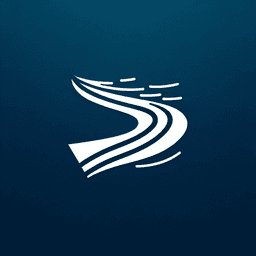
Wake: Definition, Meaning, and Examples
January 16, 2025
Wake
In maritime terminology, a wake refers to the track or path left on the surface of the water by a ship or other vessel as it moves through the water. This phenomenon is caused by the displacement of water due to the vessel's hull and propellers, creating a visible trail of disturbed water behind it.
The wake is an important aspect for sailors and maritime users for several reasons:
- Navigation and Safety: Understanding the wake can help in navigating safely, especially in crowded or narrow waterways. It can indicate the direction and speed of a vessel, which is crucial for avoiding collisions.
- Environmental Impact: The size and intensity of a wake can affect the surrounding environment, including shoreline erosion and the disturbance of marine life. Sailors must be aware of their vessel's wake to minimize ecological impact.
- Regulations: Many maritime areas have regulations regarding wake size and speed to ensure safety and environmental protection. Sailors need to be familiar with these rules to comply with local laws.
- Wakeboarding and Recreation: The wake created by boats is also utilized for recreational activities such as wakeboarding, where the wake is used to perform tricks and jumps.
Overall, the wake is a significant factor in maritime operations, influencing navigation, safety, environmental considerations, and recreational activities.
Understanding Wake in Maritime Context
In maritime terminology, a "wake" refers to the track or path left on the water's surface by a ship or boat as it moves through the water. This phenomenon is caused by the displacement of water by the vessel's hull and is characterized by a turbulent flow of water that trails behind the moving vessel.
Common Questions About Wake in Maritime Context
What causes a wake in the water?
A wake is caused by the movement of a vessel through the water, which displaces water and creates waves. The size and shape of the wake depend on several factors, including the speed of the vessel, its size, and the shape of its hull. Faster speeds and larger vessels typically produce larger wakes.
How does a wake affect other vessels?
The wake generated by a vessel can impact other boats and ships in its vicinity. Large wakes can cause smaller vessels to rock or capsize, and they can also lead to erosion of shorelines if the wake reaches the coast. Mariners are advised to be mindful of their wake, especially in crowded or sensitive areas.
What is the significance of a wake in navigation?
In navigation, understanding and managing a vessel's wake is crucial for safety and environmental reasons. Mariners must be aware of the potential hazards their wake can create for other vessels and the environment. Additionally, some navigational rules and regulations are in place to minimize wake impact, such as speed limits in certain areas.
Are there regulations regarding wake in maritime law?
Yes, there are regulations concerning wake in maritime law. These regulations often include speed limits in specific areas, especially near harbors, marinas, and ecologically sensitive zones, to minimize the impact of wakes. Violating these regulations can result in fines and penalties.
Understanding the concept of wake and its implications is essential for anyone involved in maritime activities, ensuring safe and responsible navigation.




